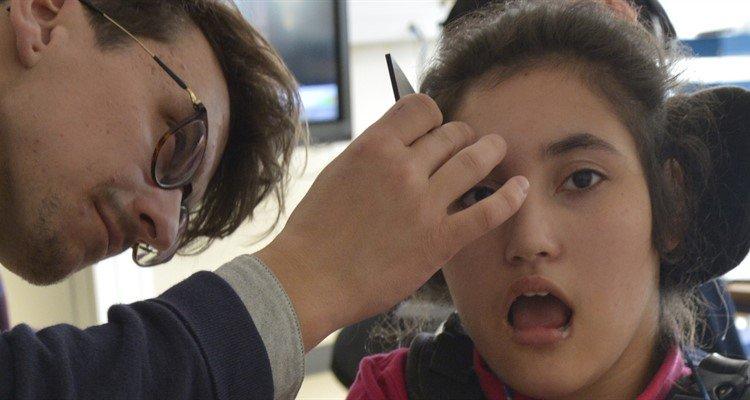
Donna's blog - Back to school
Across the country, thousands of children will be starting their first year at school this week.
I have a vague recollection of starting primary school and a school nurse asking me to tell them what I could see on a chart.
Now that I work for SeeAbility, I’ve learned what was going on back then in the primary school. The school nurse had given me what is known as a ‘vision screen’.
Not only were they checking how much detail I could see with each eye and the possibility I might need glasses, they were looking out for squint as well (where the eye can be misaligned).
Moreover, a child’s vision is still developing up to the age of eight – in basic terms, the eyes and the brain are still learning to work together. Anything that is causing a problem in one eye can leave the brain starting to ignore it leading to reduced vision in that eye.
Colloquially you may have heard of the term ‘lazy eye’ - clinically we call it ‘amblyopia.’
But whatever you call it, catch the problem early and treat it – most commonly with glasses and sometimes patching and then the weaker eye can recover. Discover too late though and a child can suffer permanently reduced vision.
So if there had been any concerns from the vision screen my parents would have been told to take me for a full eye test at a local opticians, or possibly to make a hospital visit to an orthoptist. Orthoptists are eye care professionals who specialise in the way the eyes work together and who should be involved in the training of vision screeners.
National guidelines exist that recommend this ‘vision screen’ for children at school entry (ages 4 to 5).
But not all areas fund a programme or monitor it for consistency, so it can be a ‘postcode lottery’ as to whether a child gets that early check on their eyes.
A step on from screening in special schools
As part of the new school year, our eye care team (which includes orthoptists) is excited to be back and working with our partner special schools as part of our Children in Focus campaign.
Lots of new pupils with learning disabilities and autism will be starting out at school and it will be really rewarding to support them to get a specialist eye test and help them make the best use of their vision.
Children with learning disabilities are 28 times more likely to have a serious sight problem and may not be able to describe what they can see, comply with the test, or like having their eyes covered. Our team have found that 90% of the younger age group we see would fail a vision screen and inevitably in many areas, this would lead to more appointments outside of school.
For this reason, in 2016 we came together with the key professional bodies in eye care to agree a clinical framework for the testing of children in special schools which recommended that vision screening is not a tool to use for the special schools population and that an alternative, fuller examination is what is needed.
The framework recommends aiming for as much of a ‘one stop shop’ of eye care as possible in special schools, delivering a child’s right to an annual eye test, minimising referrals to hospital where possible, and dispensing glasses on site.
You can read the clinical framework.
Full marks to Public Health England!
Public Health England is the body responsible for many screening programmes and although not responsible for vision screening, it has recently published materials to help encourage the end of the current ‘postcode lottery’.
Importantly, its expert vision screening group has recently recommended that for children in special schools, there should be an alternative assessment to vision screening, as outlined in the framework document.
This is a great boost to our campaign for specialist eye tests to be available in special schools and adds to the pressure on NHS policymakers to ensure the alternative becomes a reality.

